
Eka Pada Rajakapotasana
Eka Pada Rajakapotasana (One-Legged King Pigeon Pose) is, for many, a much-needed deep hip opener. The hips are the central hub of movement in your body. When they're tight, it's like wearing pants that are too small—the reduced range of motion in your hips, hamstrings, and spine creates discomfort.

Posture of the month Eka Pada Rajakapotasana
(Eka Pada Rajakapotasana) Pigeon Pose Prep & Practice. 1. Beginning on hands and knees or Downward Facing Dog (Adho Mukha Svanasana). On an exhalation, Bring the right knee forward and right, toward the right edge of your mat behind the right wrist, angling right shin so that the right foot rest in front of the left knee..
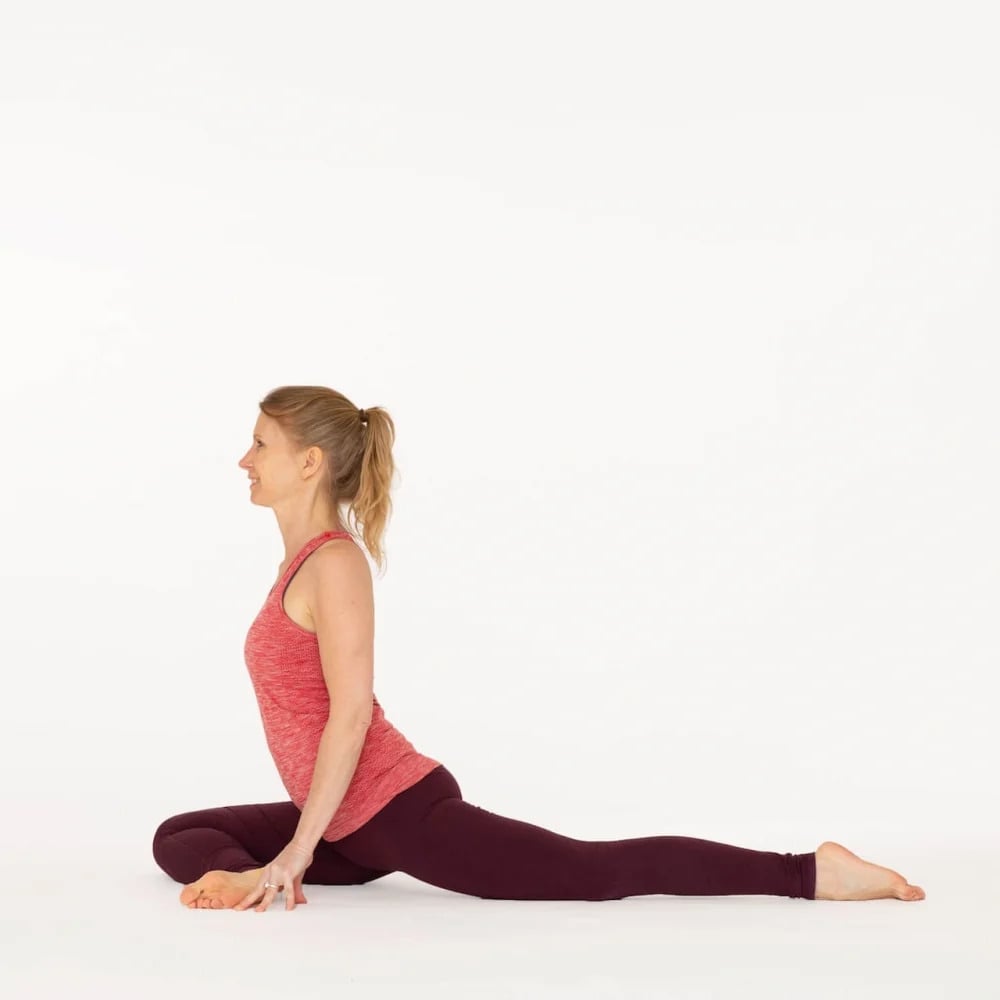
How to do Pigeon pose / Eka Pada Rajakapotasana Ekhart Yoga
As you inhale, come onto your fingertips, lengthen your spine, draw your navel in and open your chest. As you exhale, walk your hands forward and lower your upper body towards the floor. You can rest your forearms and forehead on the mat. Stay for 5 breaths or longer. On each exhalation, try to release the tension in your right hip.
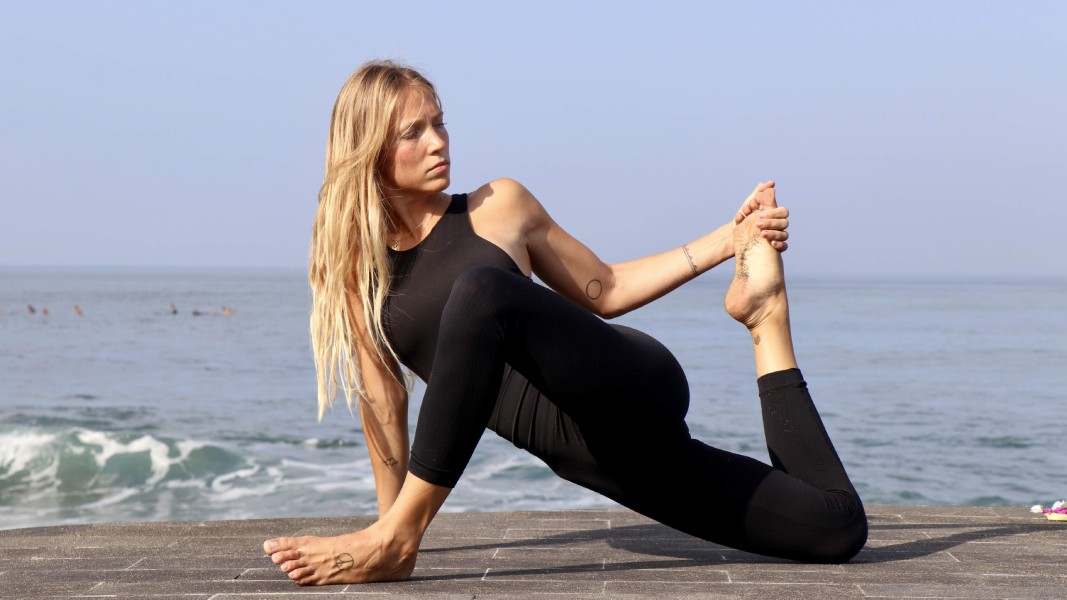
Eka pada rajakapotasana postura de la paloma The Class Yoga
Eka Pada Rajakapotasana eka = one · pada = leg or foot · raja = king · kapota = pigeon · asana = pose One-Legged King Pigeon Pose, forward bend variation; a.k.a. Sleeping Pigeon Pose Benefits Provides the external rotation and flexion that your hips need to remain agile; releases tension in your hips from sitting all day. Instruction 1.
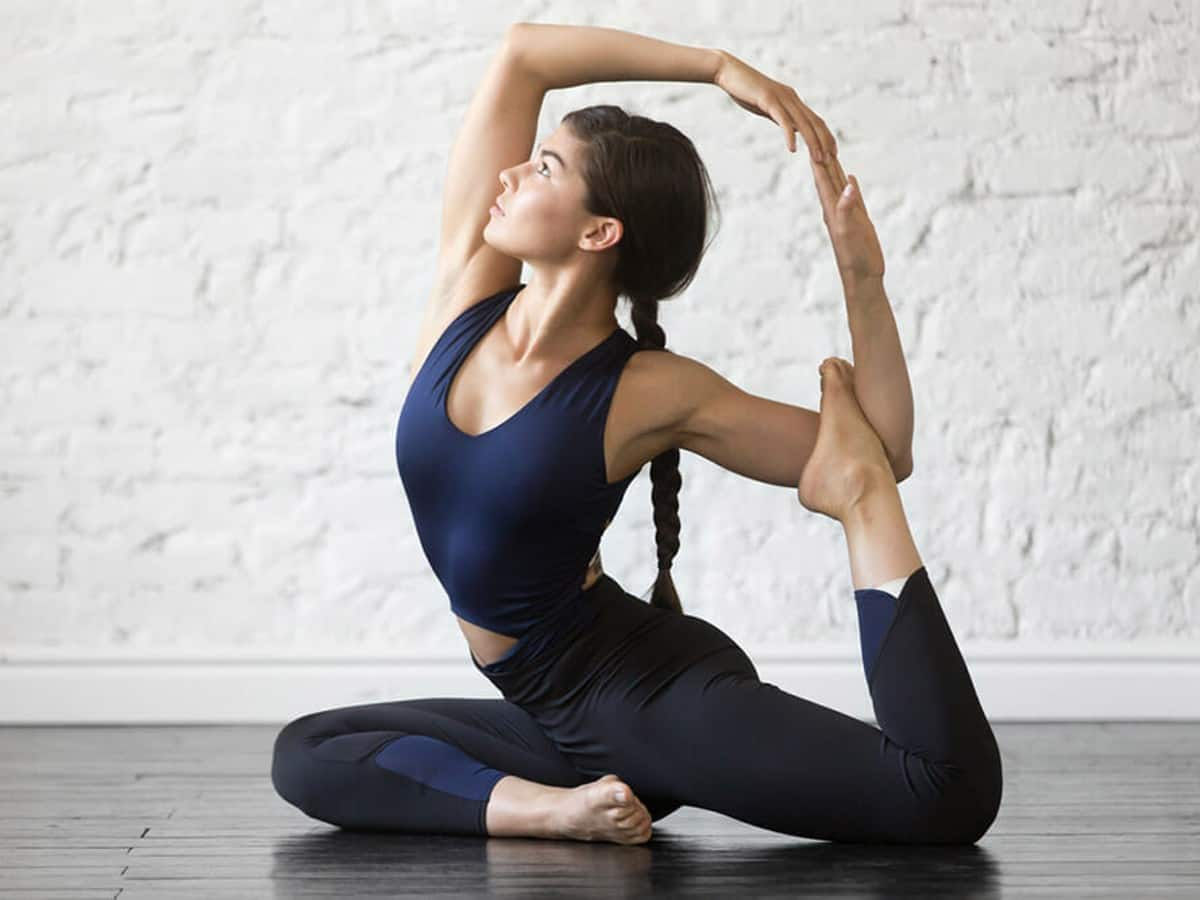
King Pigeon Pose (Eka Pada Rajakapotasana) How To Practice, Benefits And Precautions
One Legged King Pigeon Pose, or Eka Pada RajaKapotasana (also called Ek Pad RajKapotasan) is an advanced version of Pigeon pose (Kapotasana) that requires high degree of flexibility and strength in the first place. It helps improve many joints, muscles and releases tremendous energy locked in the various joints and muscles.
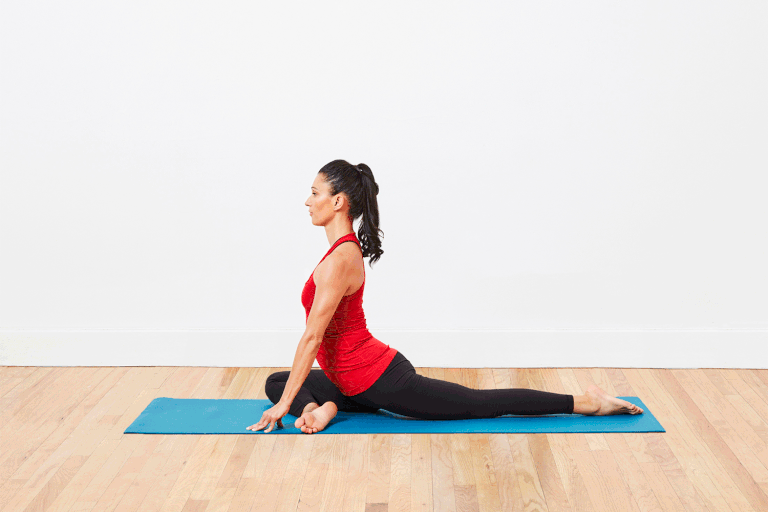
EKA PADA RAJAKAPOTASANA Postura de la Paloma Mi Encuentro Conmigo
Eka pada rajakapotasana (aa-KAH pah-DAH rah-JAH-cop-poh-TAHS-anna), also known as pigeon or one-legged king pigeon pose, is an intermediate backbend that relieves nerve tension and chronic pain while increasing circulation and helping us control our desires. During this exercise, make sure to maintain a focus on your breathing.

King Pigeon Pose (Eka Pada Rajakapotasana)
King Pigeon Pose (Eka Pada Rajakapotasana) is one of those wonderfully challenging postures that requires both stability and mobility—easier said than done. Most yoga poses ask of us the same, but this one is particularly demanding. It requires you to remain aware, secure, and fluid, all at once, in order to avoid injury.
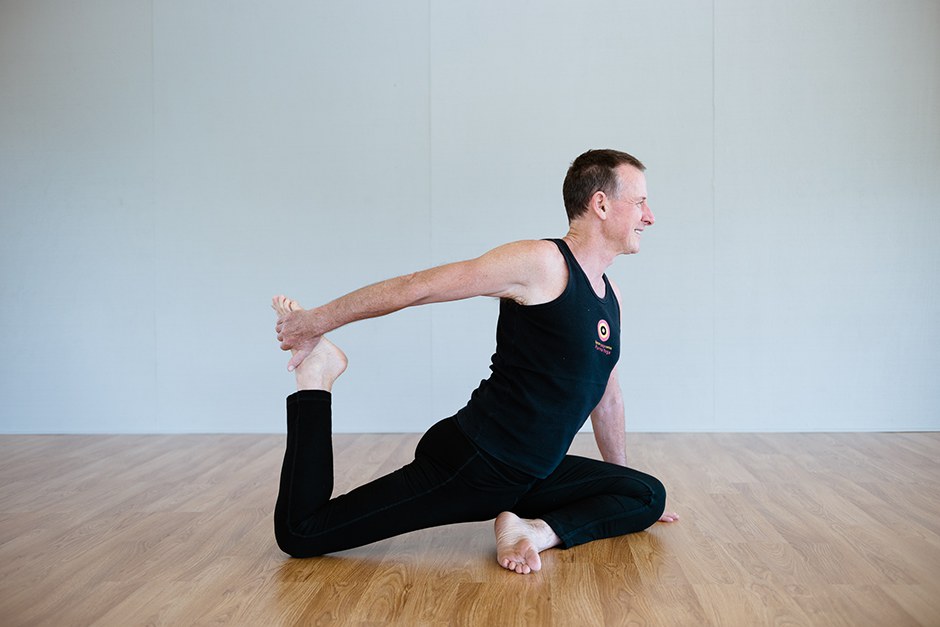
Eka Pada Rajakapotasana Byron Yoga
Eka Pada Rajakapotasana ( Sanskrit: एक पाद राजकपोतासन; IAST: Eka Pāda Rājakapotāsana ), Rajakapotasana, or [One-legged] King Pigeon Pose [1] is a seated back-bending asana in modern yoga as exercise. The Yin Yoga form of the asana is named Swan Pose, while the Aerial yoga variant, supported in a hammock, is called Flying Pigeon Pose.
:max_bytes(150000):strip_icc()/woman-practicing-yoga-527675969-57fab1b15f9b586c357eca57.jpg)
How to Do Full Pigeon Pose Eka Pada Rajakapotasana
Step 9. To release Pigeon Pose, gently walk the hands back towards the hips and bring the torso up perpendicular to the earth. Press into the fingertips and tuck the back toes. Lift the front leg up off the earth. Press the hips up and back as you extend the right leg back to a three-legged dog. Bring the right foot down to Downward Facing Dog.
_0.jpg)
Eka Pada Rajakapotasana 1 (easy var) yogasana
Eka Pada Rajakapotasana II (One-Legged King Pigeon Pose II) is a backbend and a front stretch that requires a combination of stability and mobility.. The pose is also a place to slow down. "This pose offers us a wonderful opportunity to experience the power of the pause," says yoga teacher Carrie Owerko. "Deliberate pausing and breathing synchronizes the body, mind, and breath so that.

How to Do Eka Pada Rajakapotasana (Pigeon Pose) OmStars
How to Do Pigeon Pose (Eka Pada Rajakapotasana) Pigeon Pose (Eka Pada Rajakapotasana) is practiced in a progression from a simple hip-opening prep pose to a forward bend and then a backbend. Pigeon Pose (Eka Pada Rajakapotasana) is practiced in a progression from a simple hip-opening prep pose to a forward bend and then a backbend. Menu Fitness

Eka Pada Rajakapotasana II (OneLegged King Pigeon Pose 2) — Jack Cuneo Yoga
Eka Pada Rajakapotasana IV (One-Legged King Pigeon Pose IV) is a beautiful advanced-level asana. When you see someone doing this pose, you may think you will never be flexible enough to do it yourself.
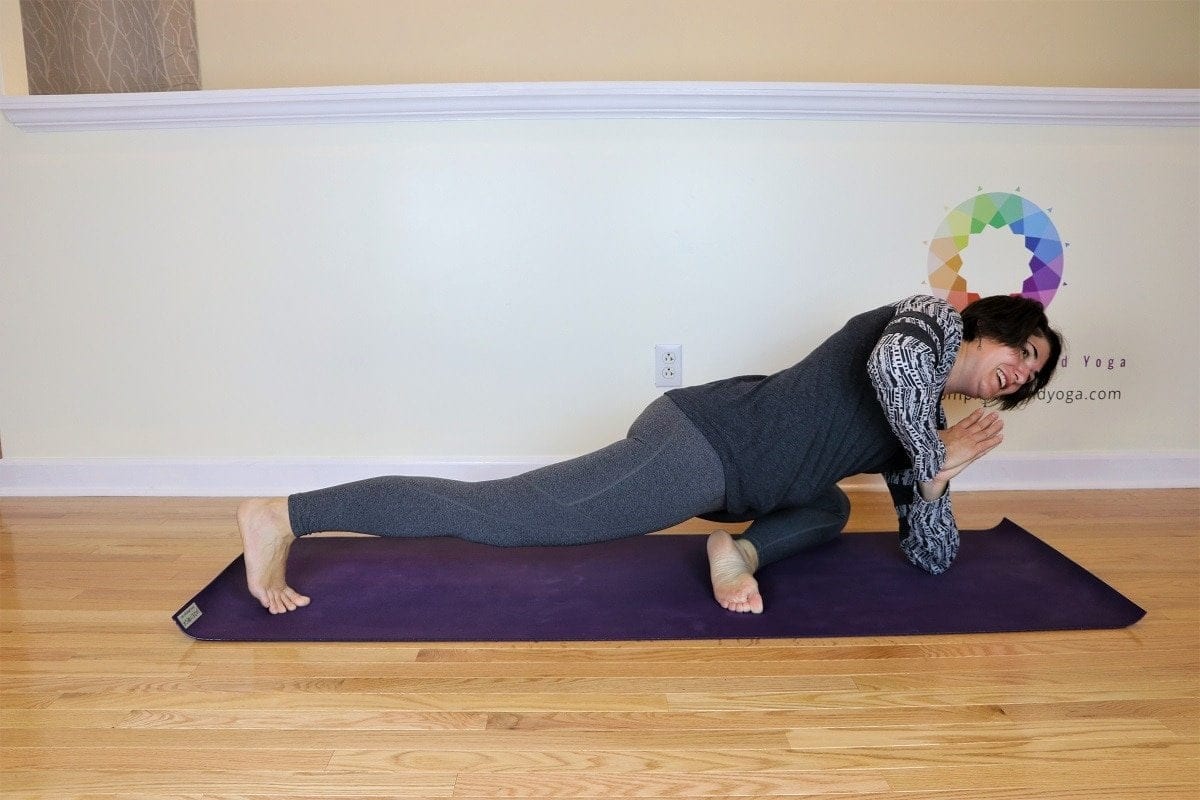
The Best Way to Practice Parivrtta Eka Pada Rajakapotasana Custom Pilates and Yoga
To prepare for Eka Pada Rajakapotasana I, in the two weeks preceding it, we did standing poses, Adho Mukha (Downward-Facing Dog), Adho Mukha Vrksasana (Handstand), Pincha Mayurasana (Forearm Balance), Ustrasana (Camel Pose), Urdhva Mukha Svanasana (Upward-Facing Dog), Urdhva Dhanurasana (Upward Bow Pose), Dwi Pada Viparita Dandasana (Two-Legged.
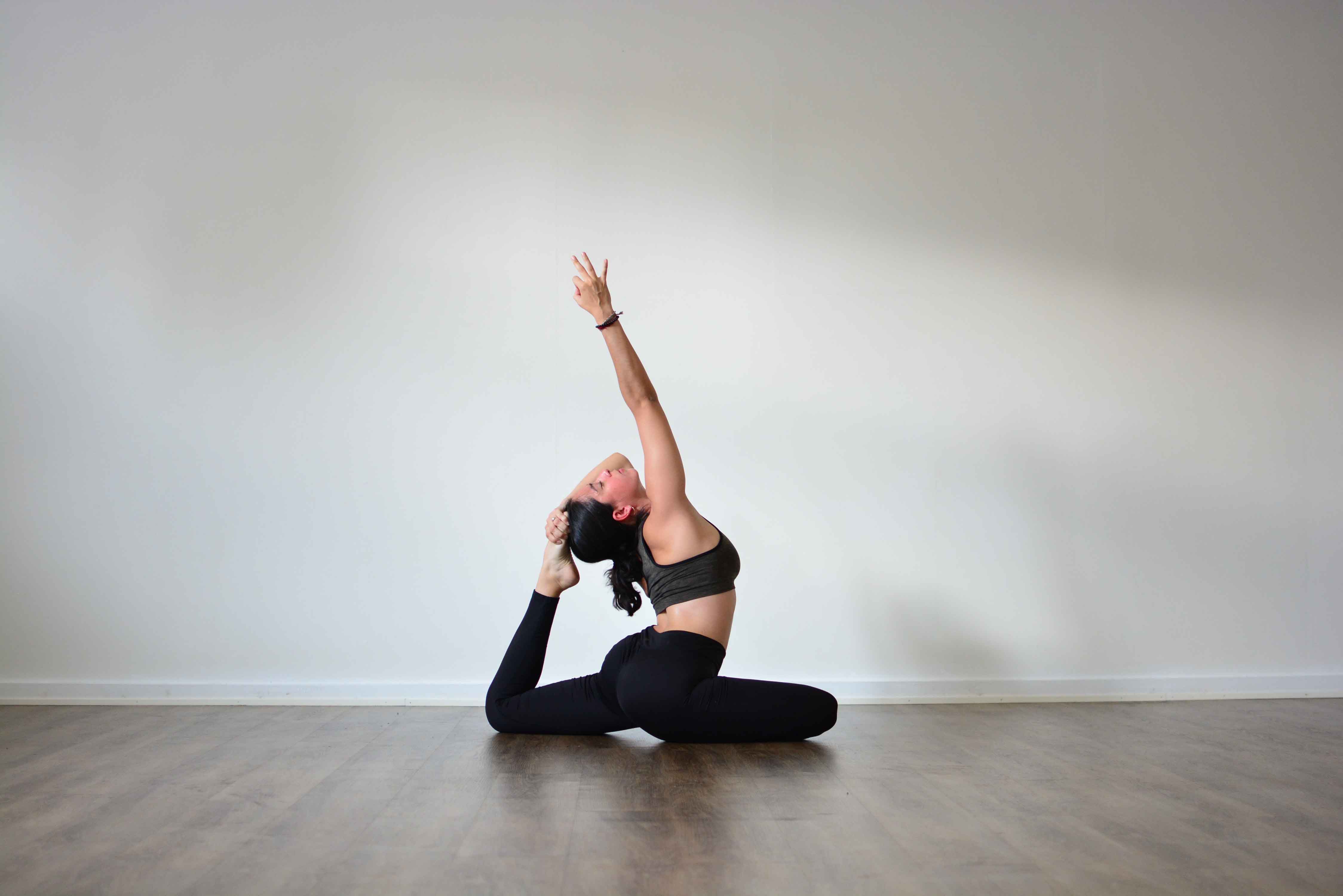
Eka Pada Rajakapotasana OneLegged King Pigeon Pose YOGATEKET
Learn how to do One-Legged King Pigeon (Eka Pada Rajakapotasana). This free beginner video tutorial will teach you the proper alignment and technique to help.
_0.jpg)
Eka Pada Rajakapotasana 1 (var) yogasana
Eka Pada Rajakapotasana (Pronounced as "ache-ah POD-ah RAHJ-ah-kah-poh-TAHS-anna") The Sanskrit phrase eka pada means "one foot," and rajakapotasana means "the King of the pigeons." Here you puff out your chest to the maximum like a proud pigeon. How to do One-Legged King Pigeon Pose Step One

Eka Pada Rajakapotasana 2 yogasana
In Sanskrit 'Eka' means one, 'Pada' means foot, 'Raja' means king, 'Kapota' means pigeon, and 'Asana' means posture. One-Legged King Pigeon Pose is not found in any ancient Hatha yoga texts. This pose was first officially described in the 20th century by Pattabhi Jois and B. K. S. Iyengar in their respective yoga books.